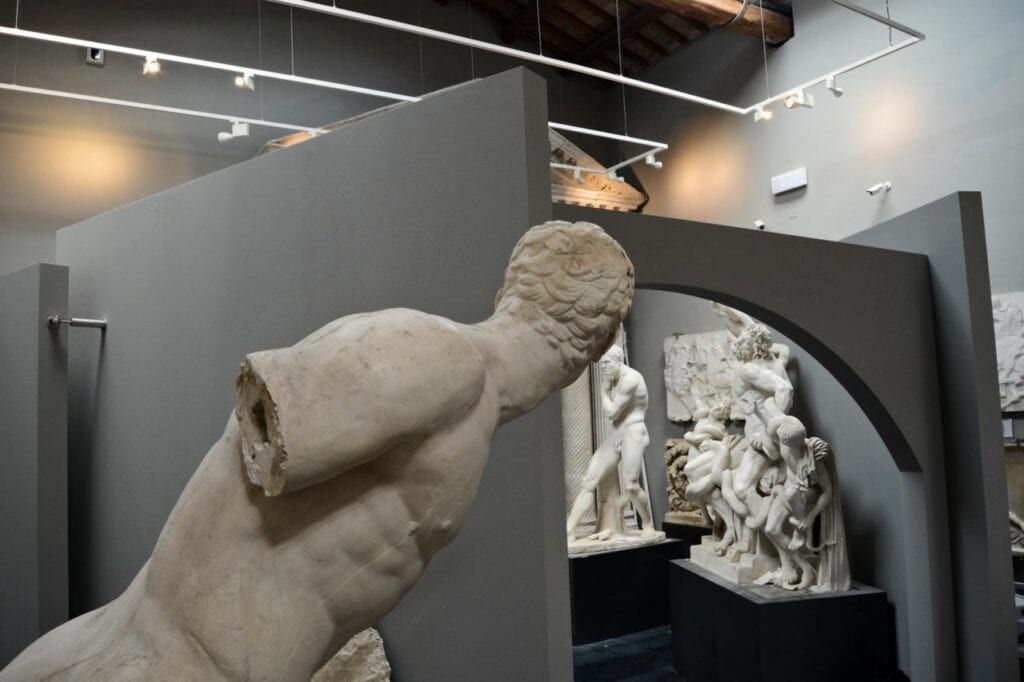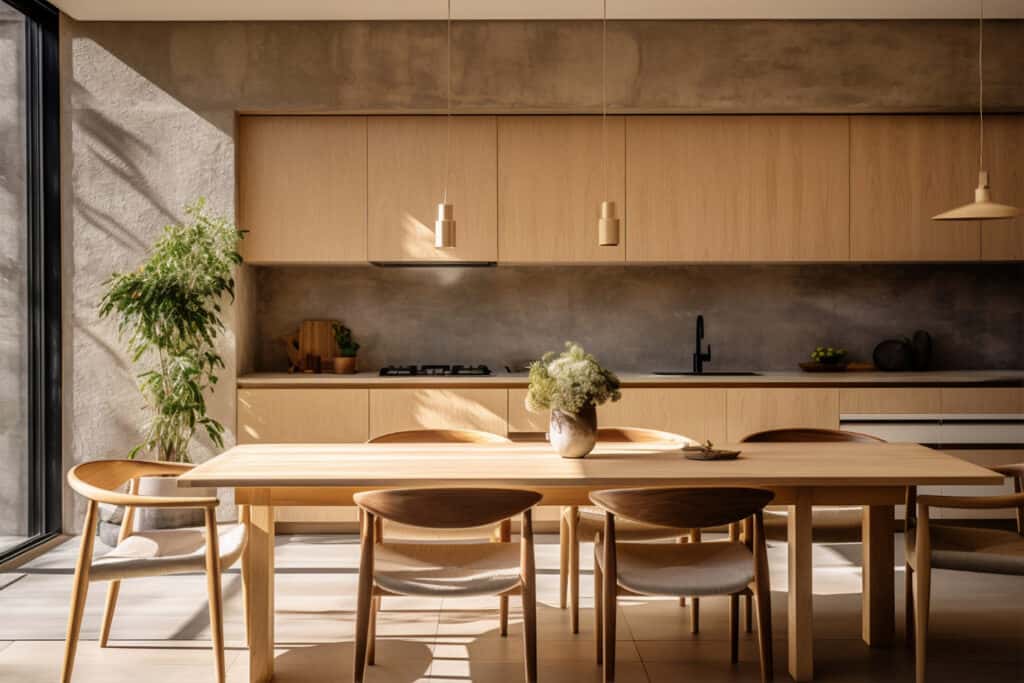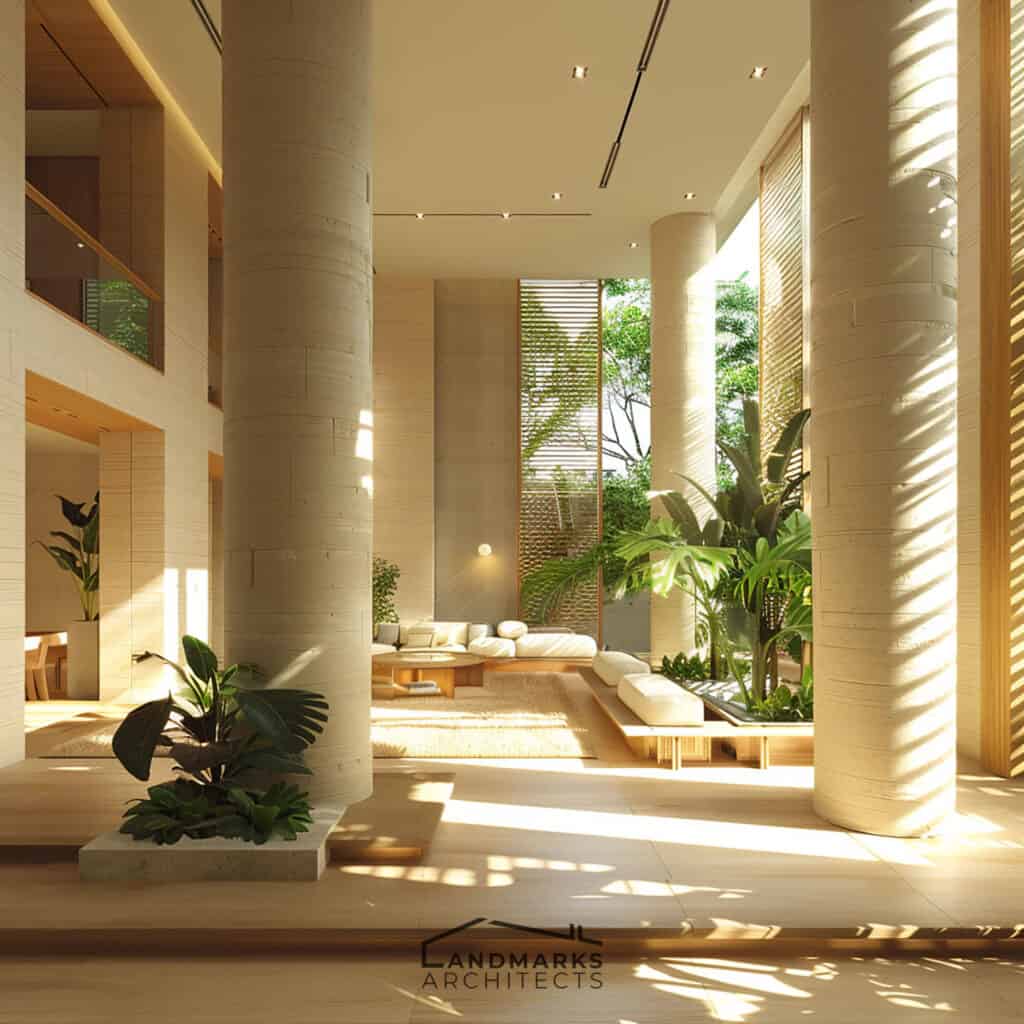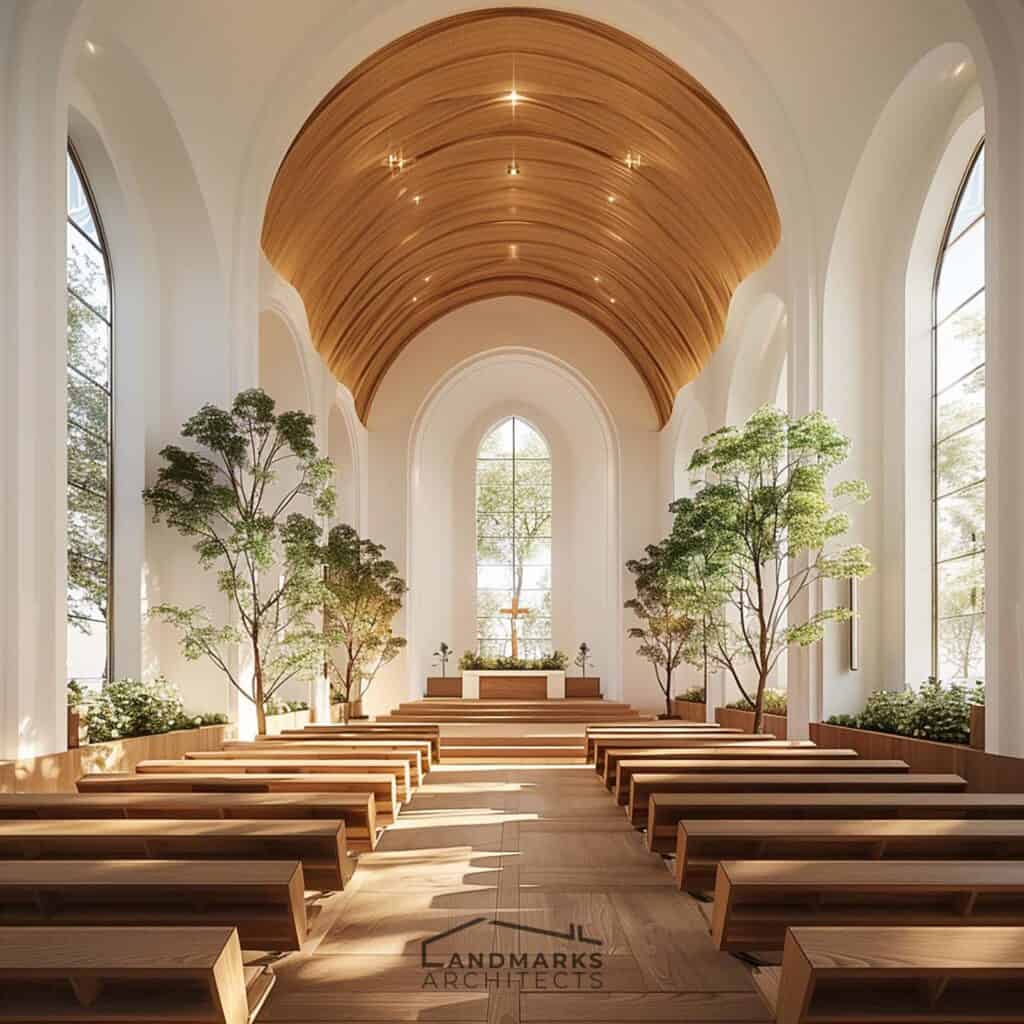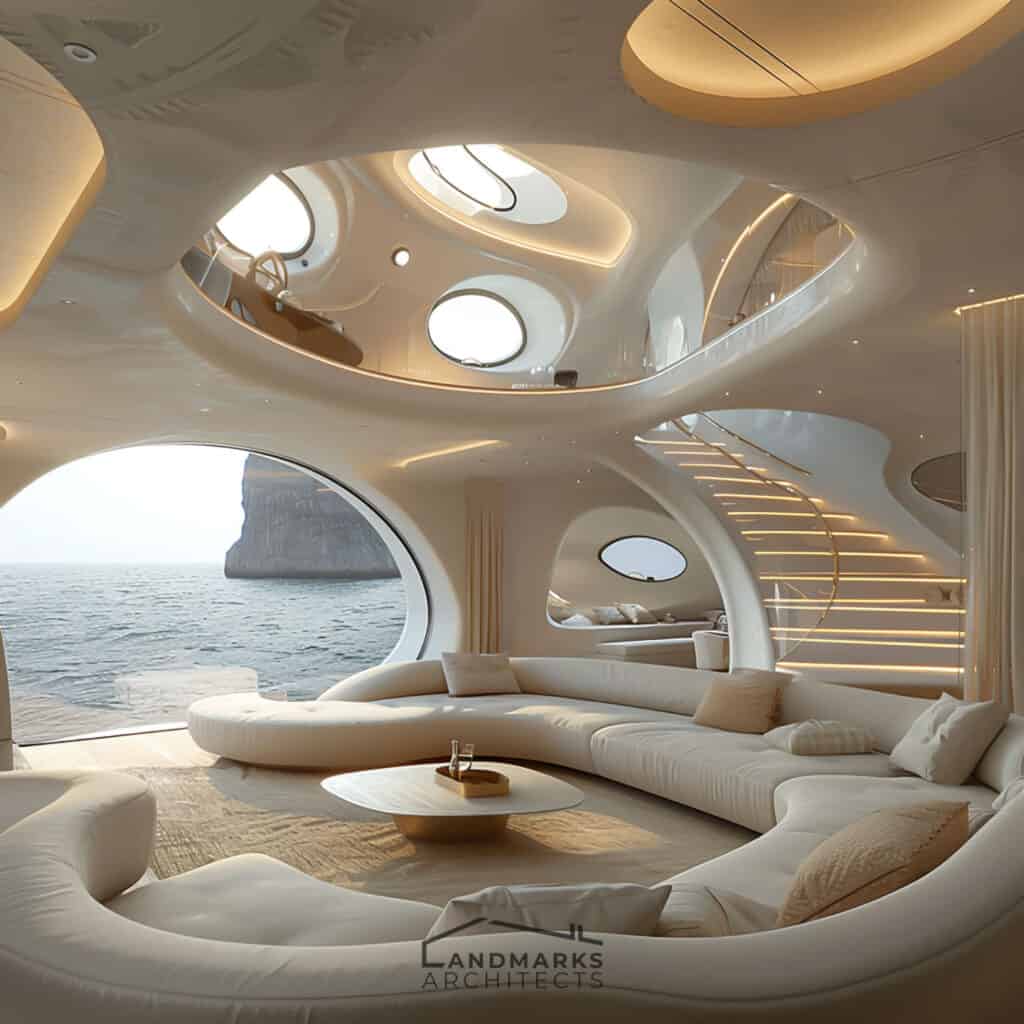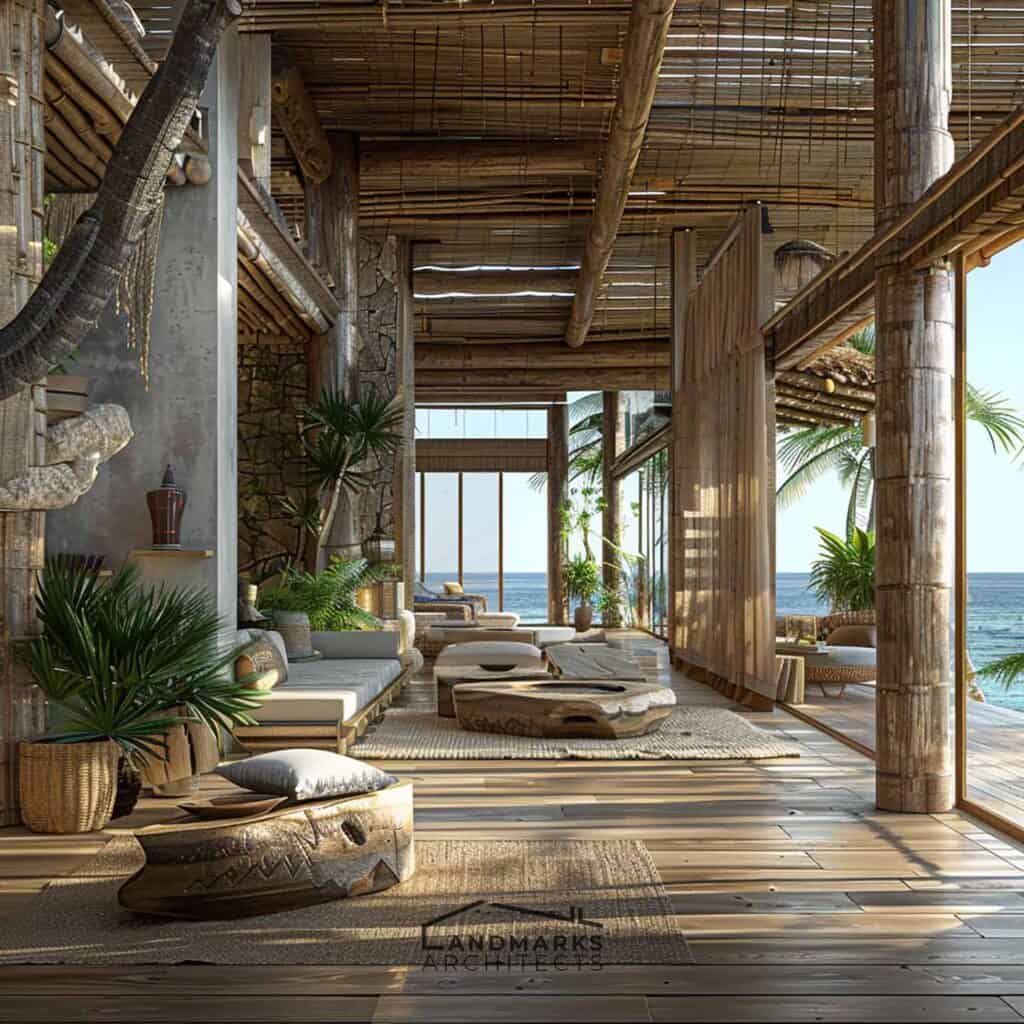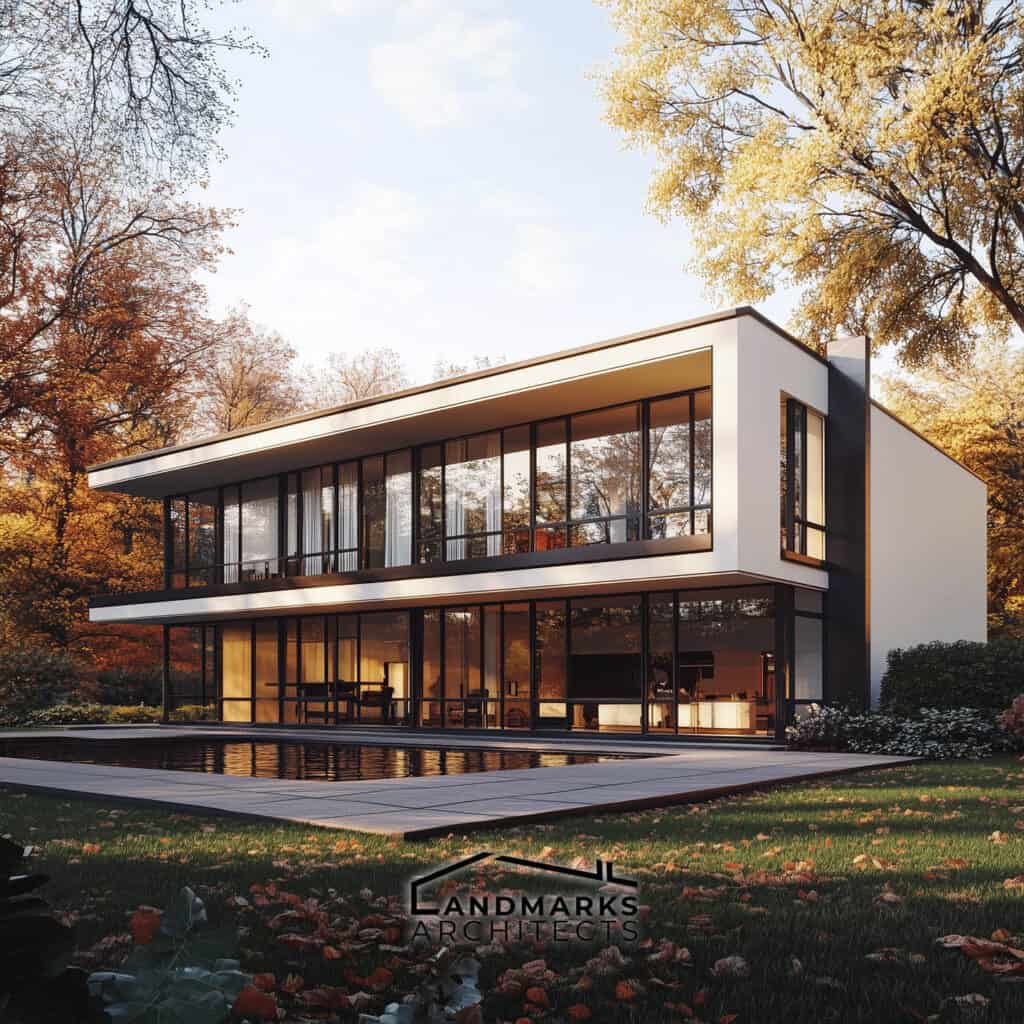
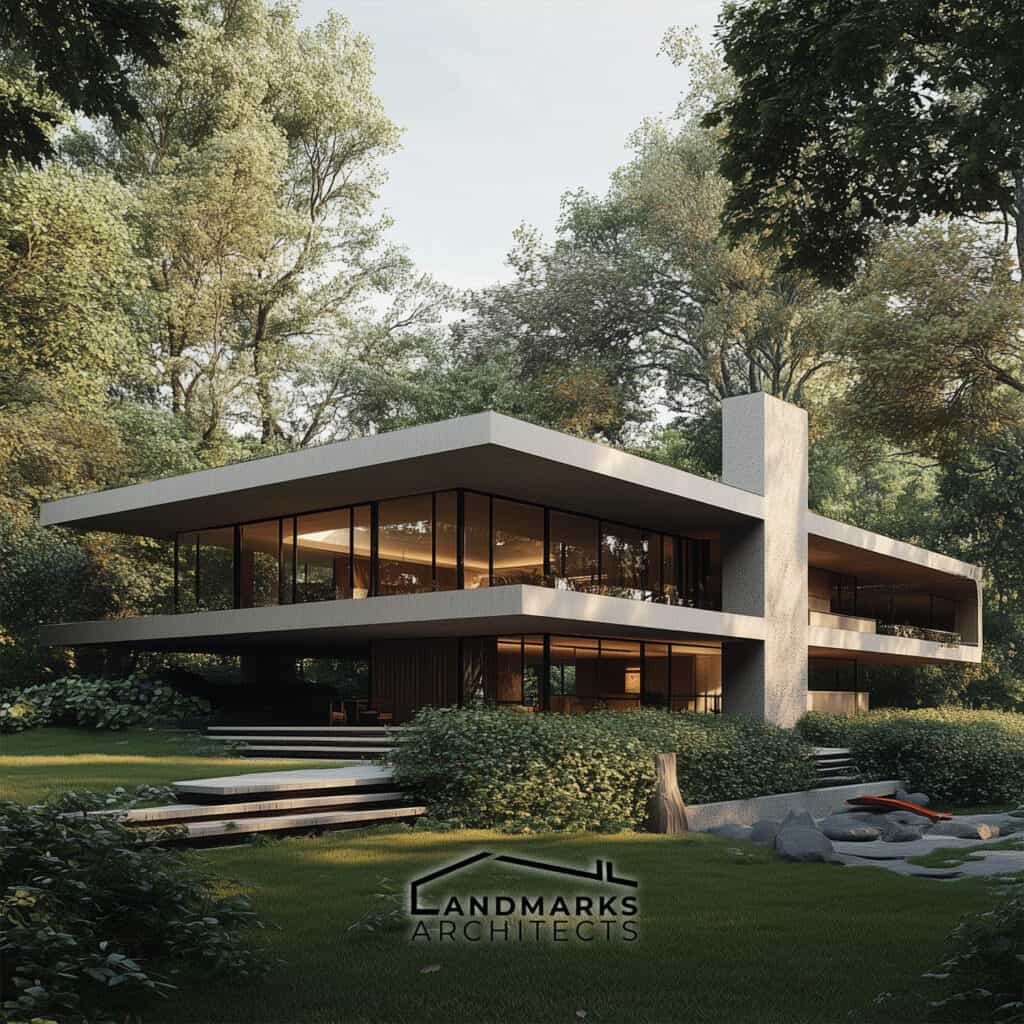
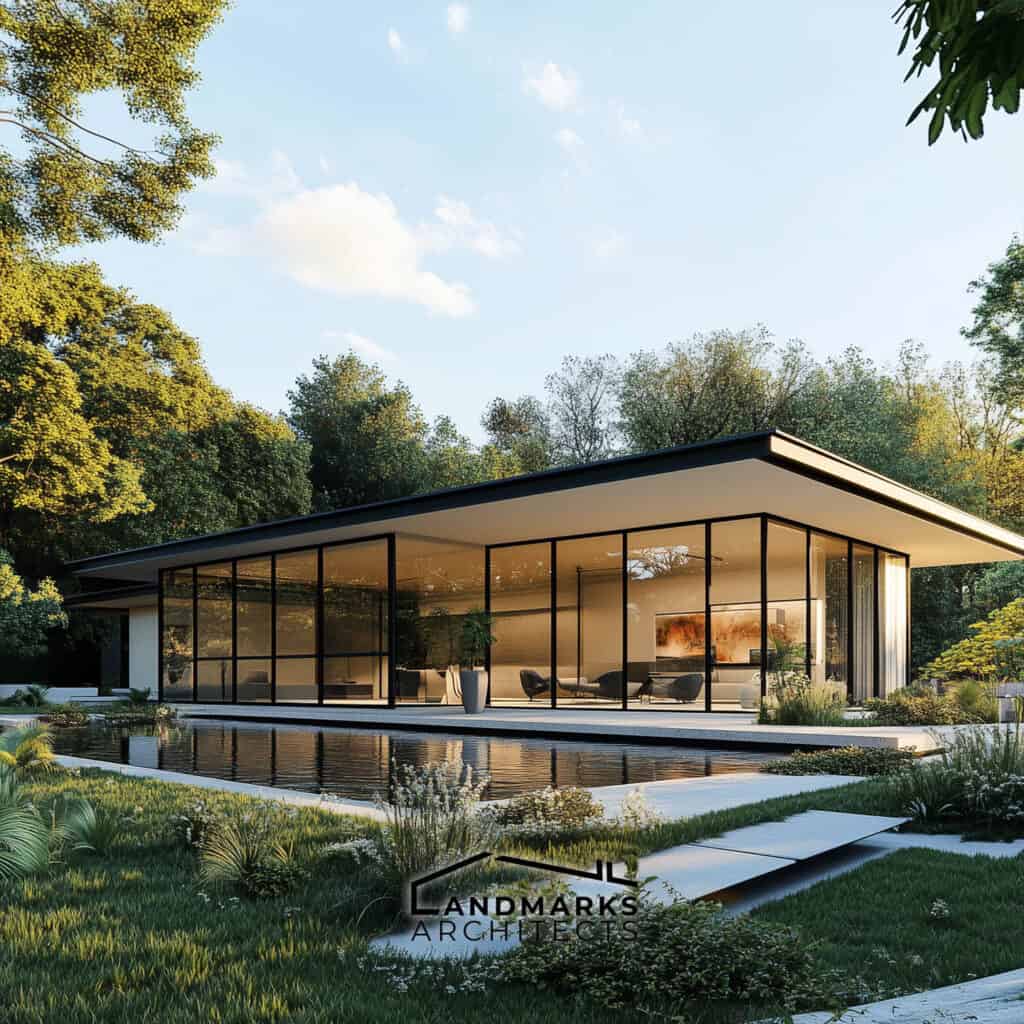
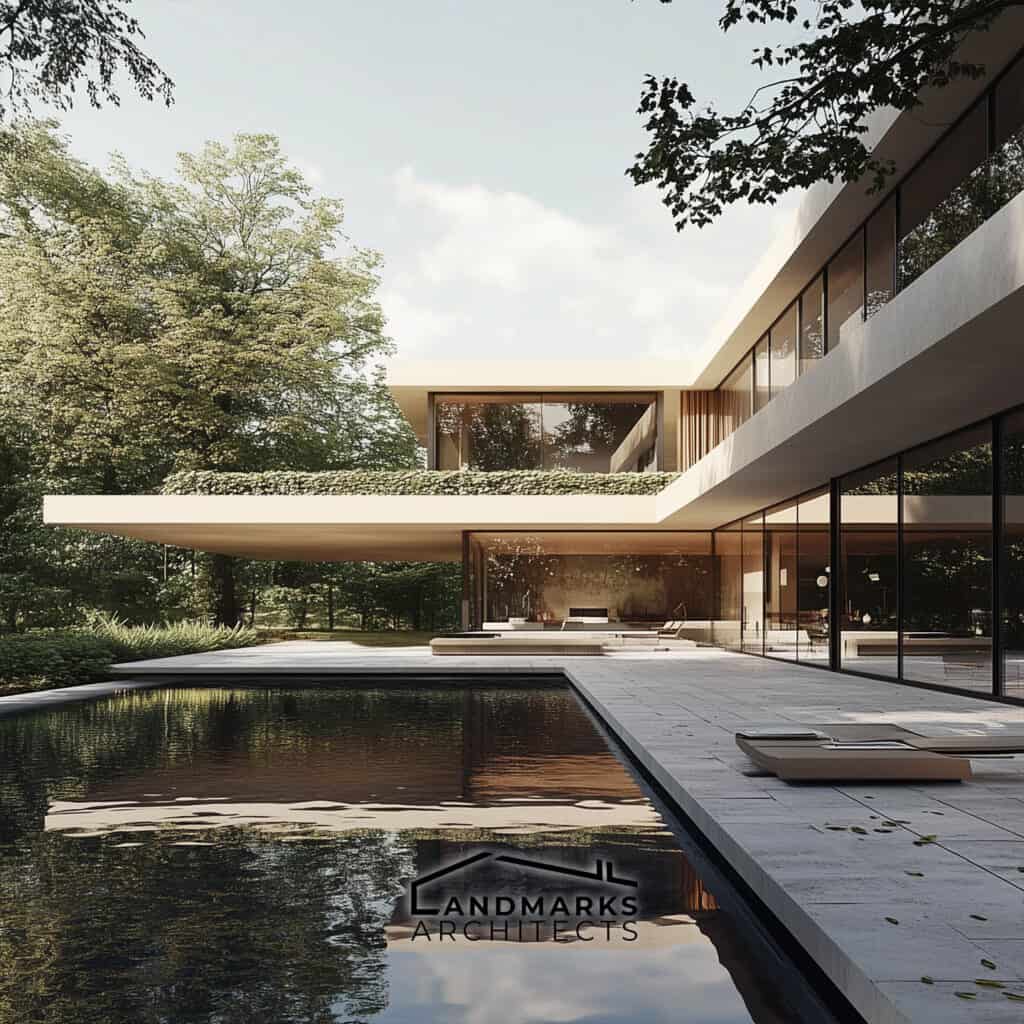
Have you ever wondered how architecture can be both functional and visually striking? Modernist design offers a compelling approach, blending practicality with sleek, minimalist aesthetics. If you’re ready to explore a style that enhances both form and function, modernism might be your perfect match.
At Landmarks Architect, we specialize in modernist architecture, drawing on years of experience to help you navigate its key features. In this article, you’ll discover:
- Functional design
- Minimalist aesthetics
- Innovative use of industrial materials
- Open floor plans
- Geometric forms
- Integration with nature
- Large, unadorned windows
- Rejection of ornamentation
- Structural engineering advances
- Emphasis on simplicity and clarity
Ready to see how modernist principles can redefine your space? Read on to learn how these elements create a design that’s both beautiful and practical.
- 1. Emphasis on Functionality
- 2. Minimalist Aesthetics
- 3. Use of Industrial Materials
- 4. Open Floor Plans
- 5. Flat Roofs and Geometric Forms
- 6. Integration with Nature
- 7. Large, Unadorned Windows
- 8. Rejection of Ornamentation
- 9. Innovation in Structural Engineering
- 10. Focus on Simplicity and Clarity
- What is modernist style in architecture? A Recap
- FAQ
1. Emphasis on Functionality
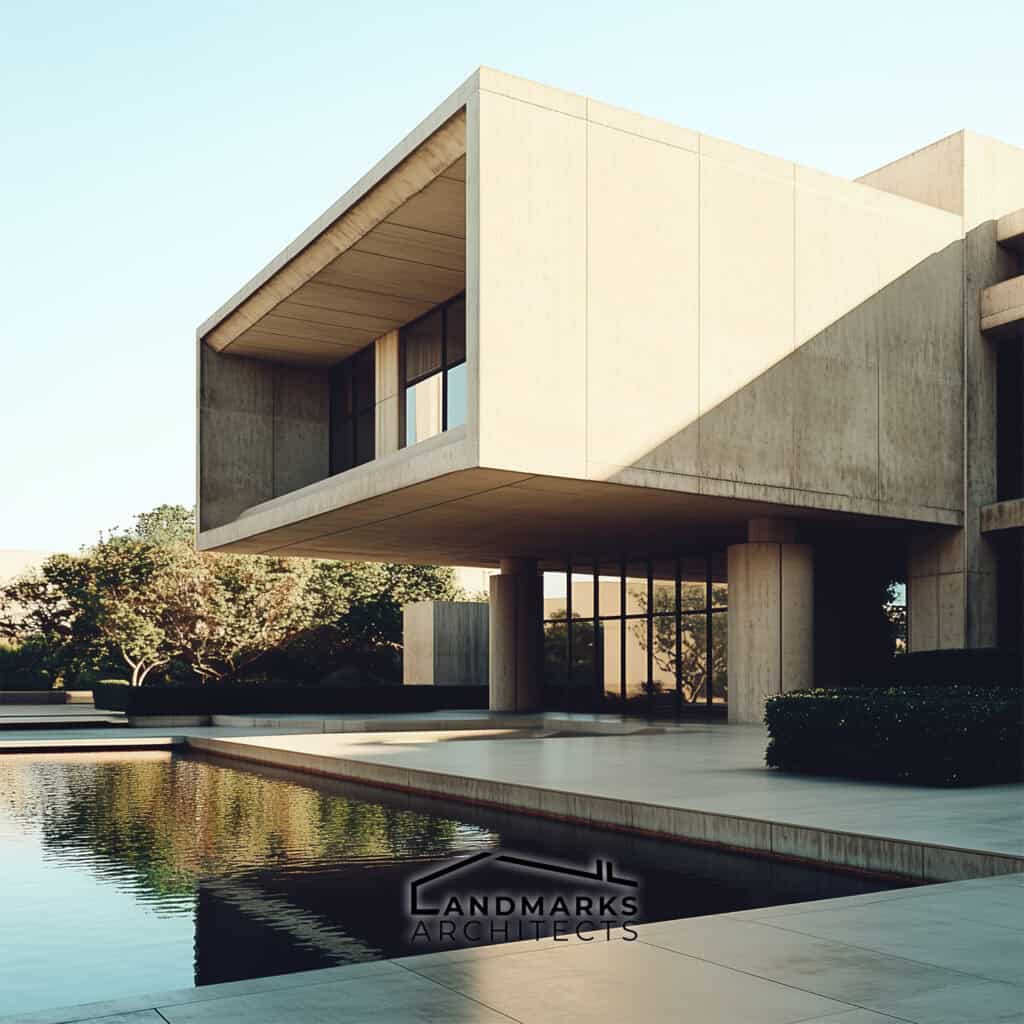
- Key Points:
- Focus on practical and functional design over decorative elements.
- Use of modern materials like reinforced concrete and steel frames.
- Modernist architecture values simplicity in both form and function.
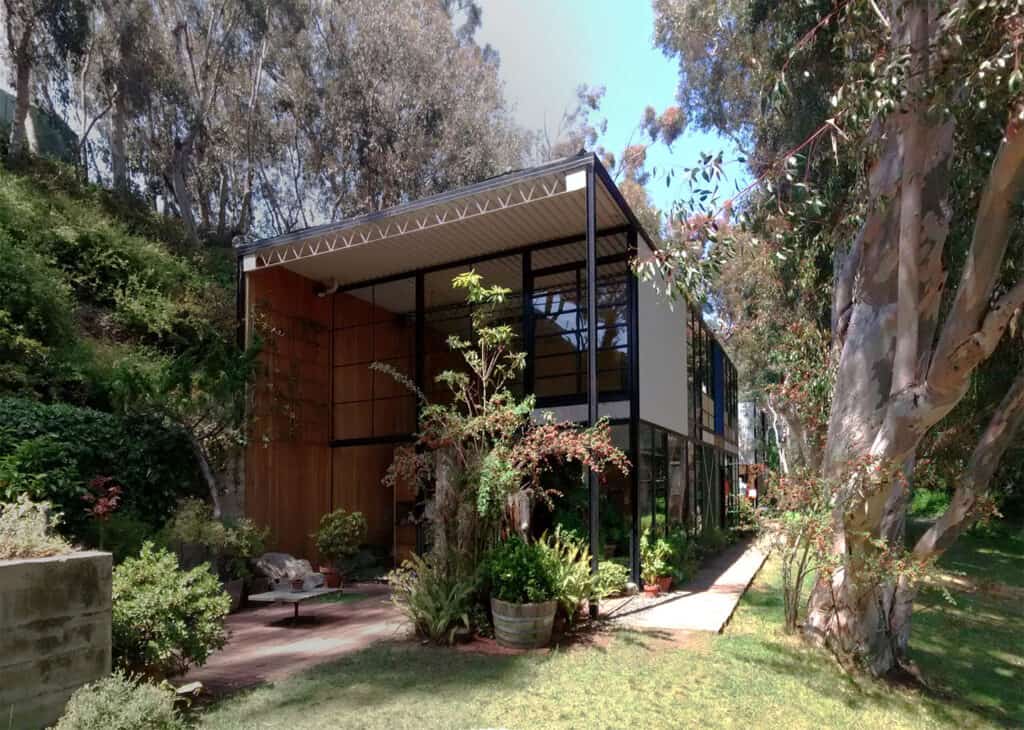
- Example: The Eames House is a great example of Modern Architectural Style that focuses on practicality. It uses strong materials like reinforced concrete and steel frames. The design is simple but attractive. This house shows how modern homes can be both useful and stylish without extra decorations.
2. Minimalist Aesthetics
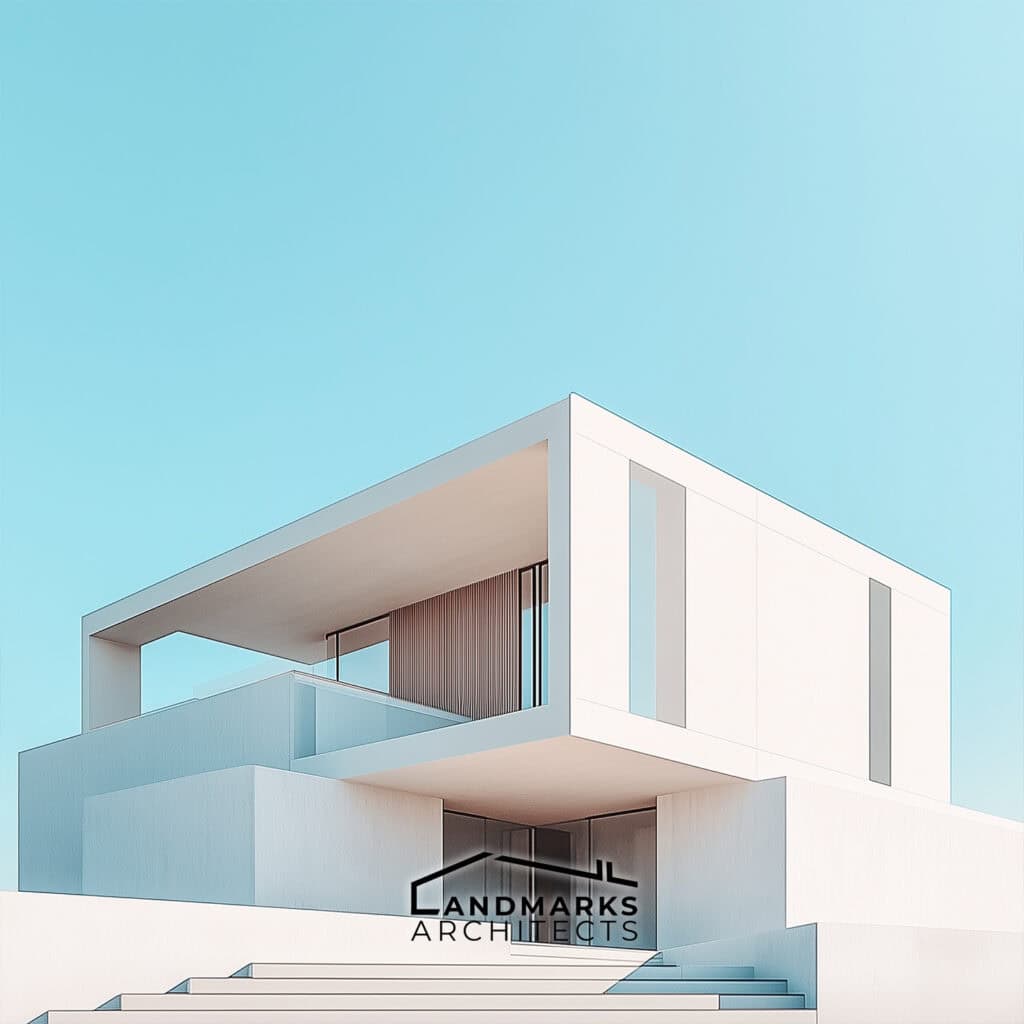
- Key Points:
- Minimalist design with clean lines and minimal ornamentation.
- Emphasis on geometric forms and abstract shapes.
- Focus on simplicity and clarity in architectural style.
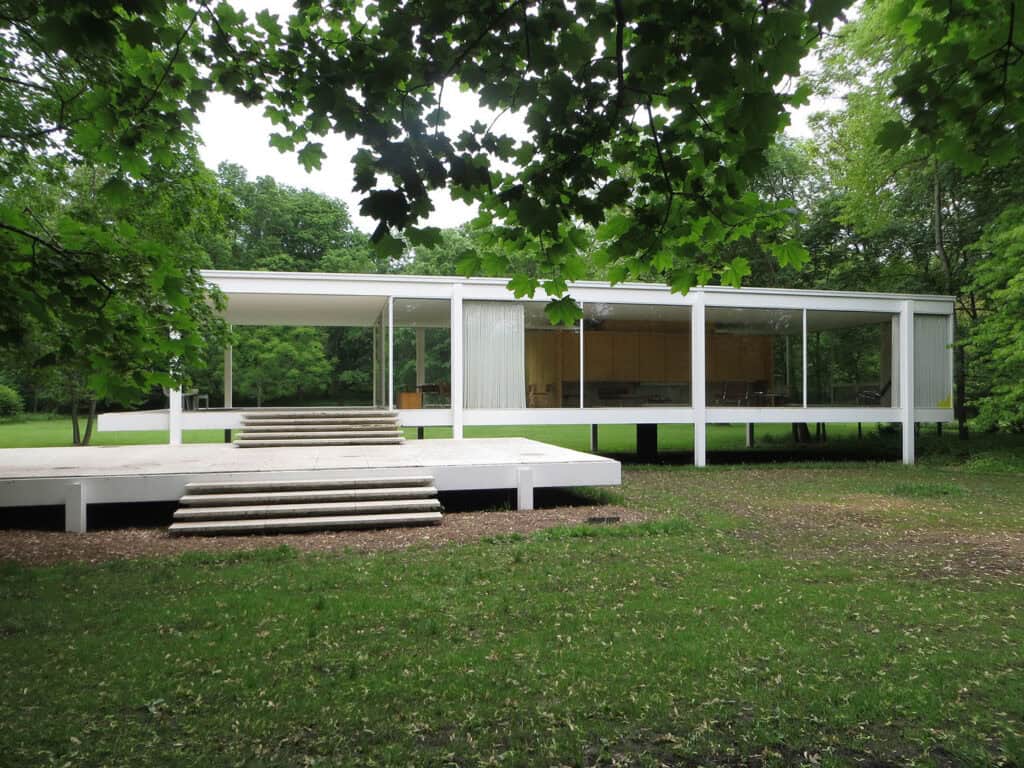
- Example: Ludwig Mies van der Rohe’s design of the Farnsworth House is a clear example of minimalist architecture, a type of architectural style. It features glass walls, straight lines, and simple shapes. This design is stylish and practical, capturing the key ideas of modernist architecture.
3. Use of Industrial Materials
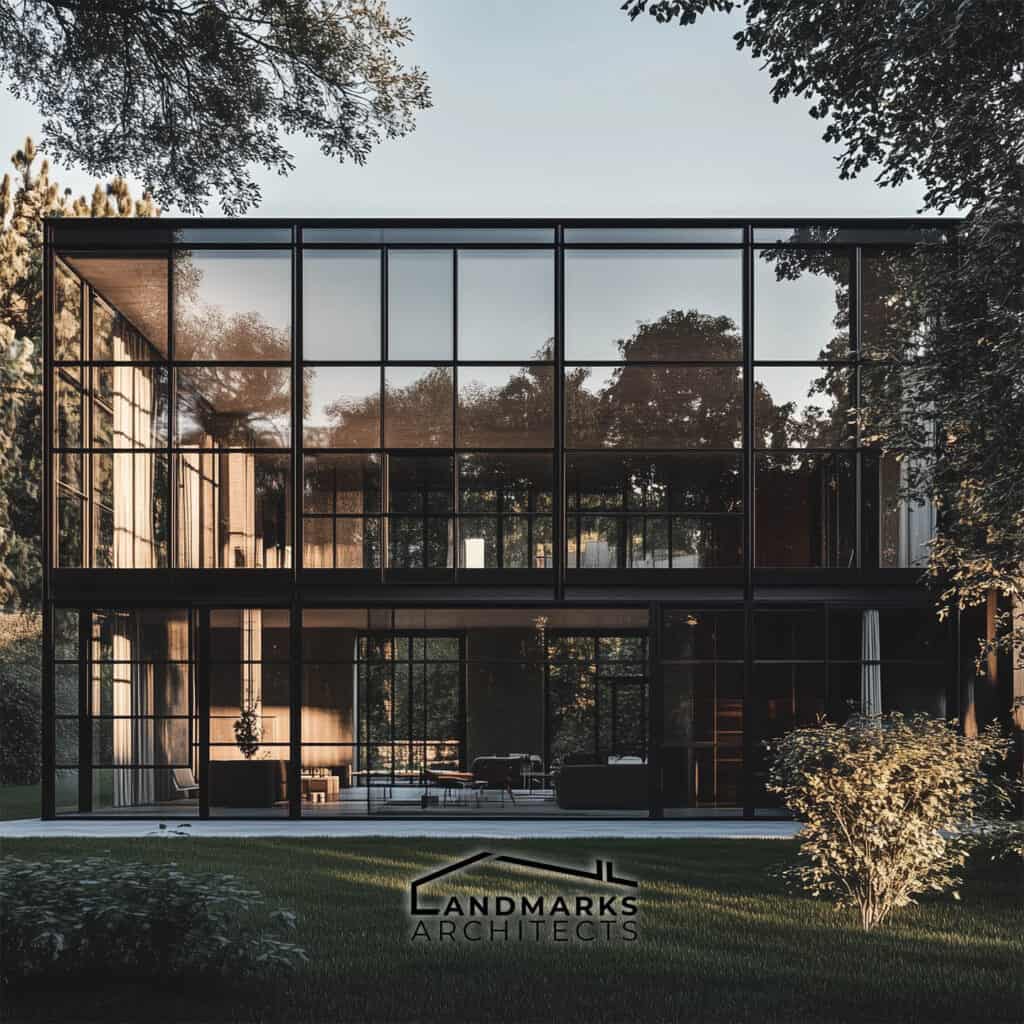
- Key Points:
- Innovative use of industrial materials like steel frames and reinforced concrete.
- Glass walls to create transparency and connection between interior and exterior spaces.
- Departure from traditional styles, embracing modern architectural styles.
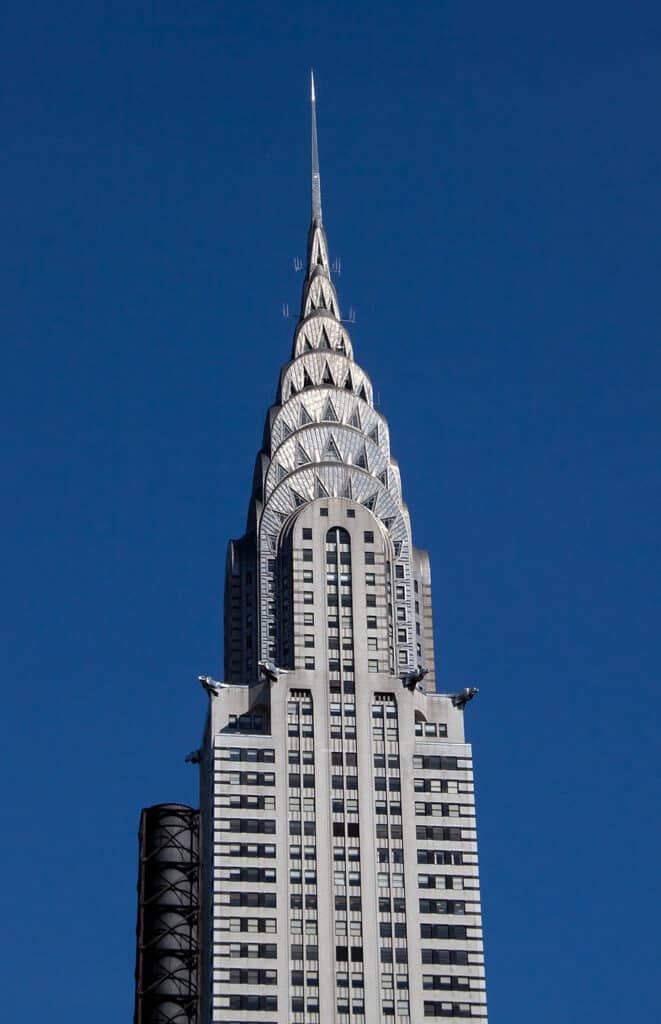
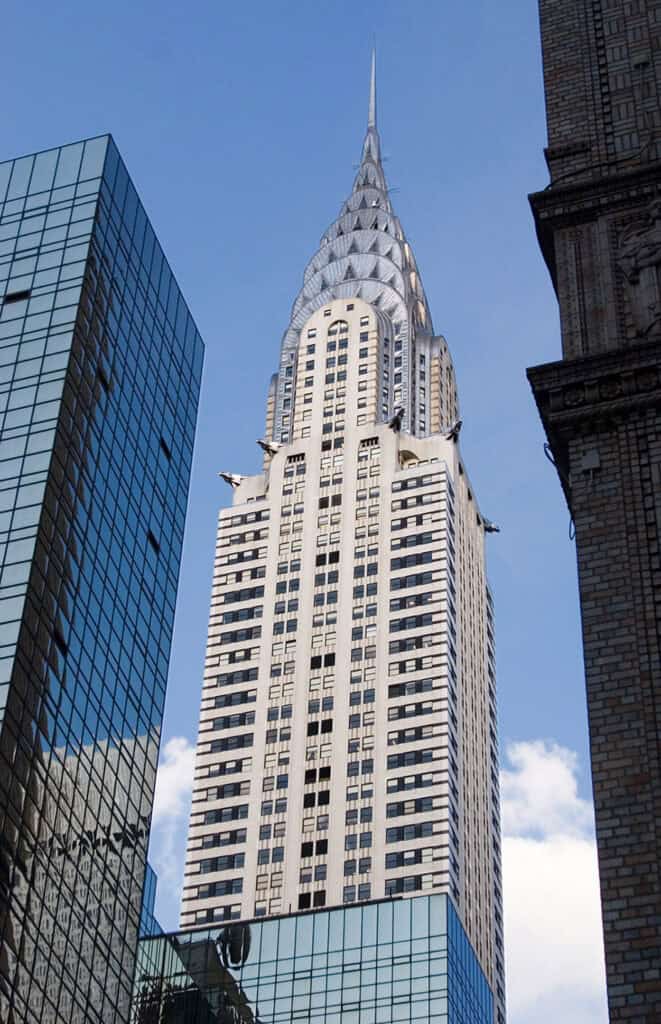
- Example: The Chrysler Building in New York is a great example of modern architecture. It uses steel frames and new materials. The building combines modernist design with art deco style. It shows how industrial materials were used in creative and new ways.
4. Open Floor Plans
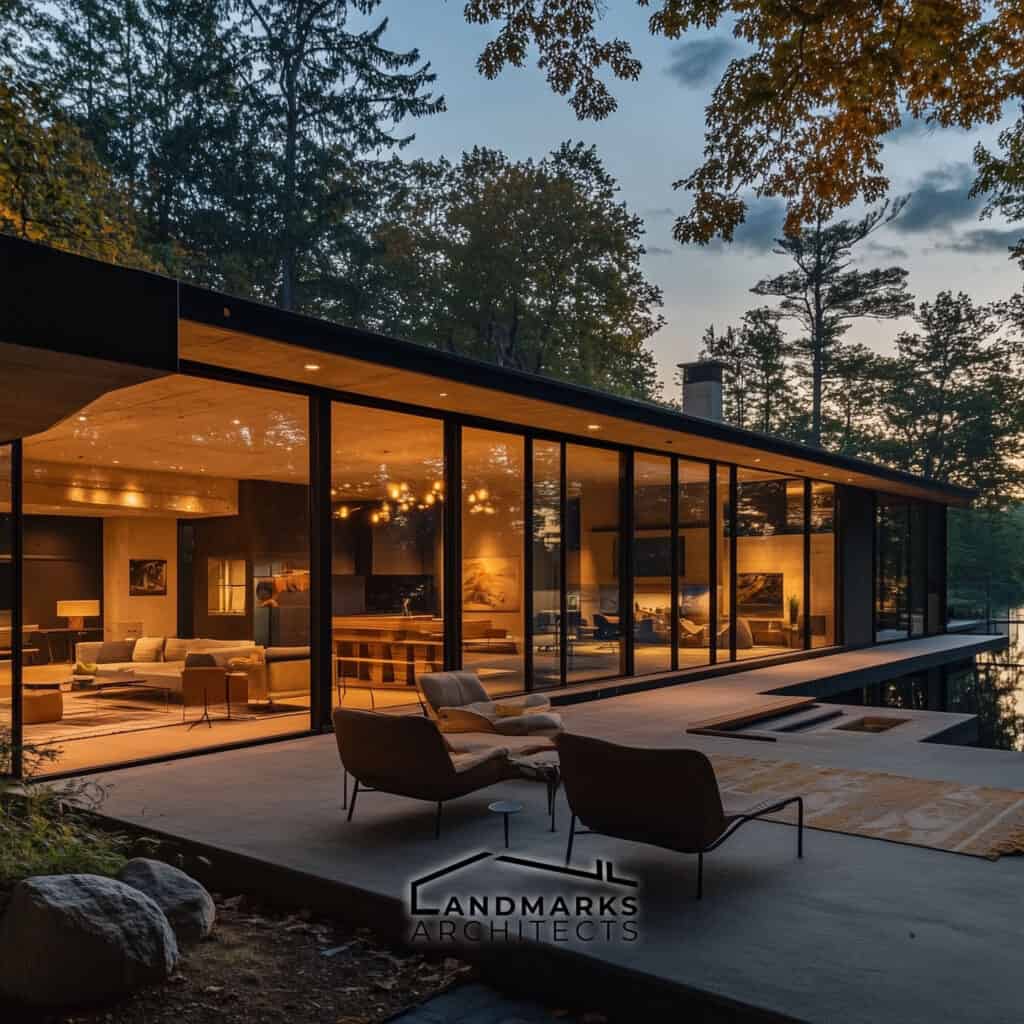
- Key Points:
- Emphasis on open, flexible spaces with seamless connection between indoor and outdoor spaces.
- Large windows for natural light and visual openness.
- Integration of interior spaces with the natural environment.

- Example: Frank Lloyd Wright’s Fallingwater demonstrates open floor plans in modern design. Its large windows and open spaces connect the indoors with the outdoors, highlighting key ideas of modernist architecture.
See Also European-Style Architecture
5. Flat Roofs and Geometric Forms
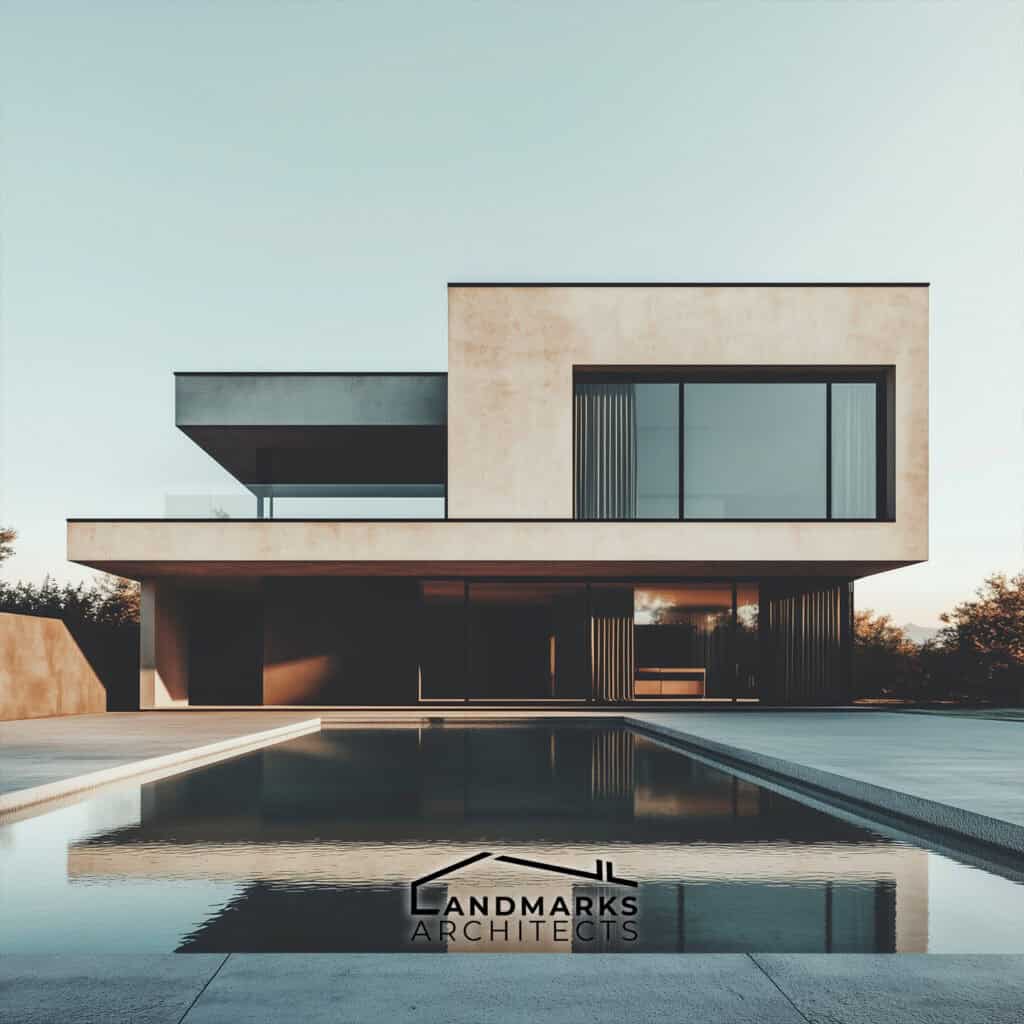
- Key Points:
- Flat roofs are a defining feature of modernist buildings.
- Use of geometric forms, including unusual and abstract shapes.
- Modernist architecture often rejects traditional pitched roofs.
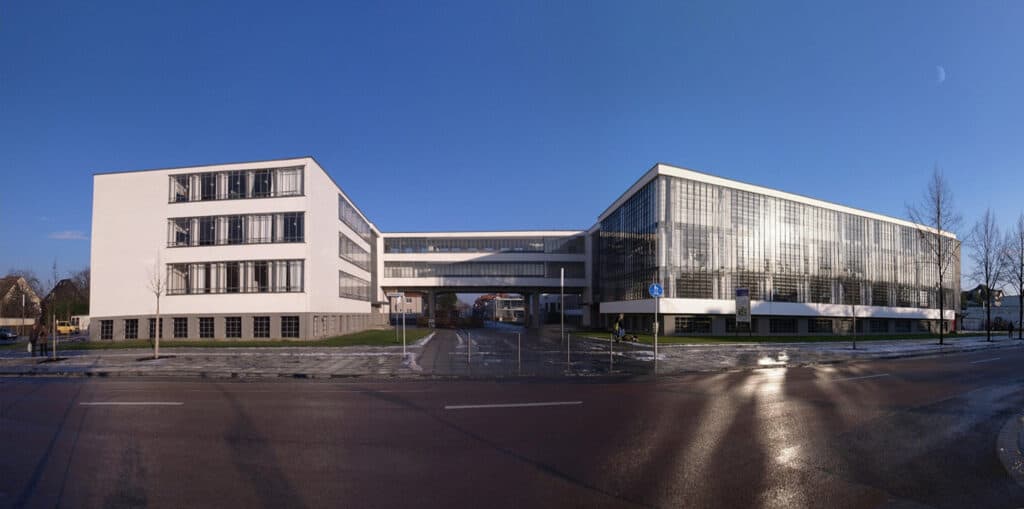
- Example: The Bauhaus Building in Dessau, Germany, is a famous example of modernist architecture and an important architectural landmark. It features flat roofs and geometric forms. The building’s design emphasizes functionality and simplicity, using bold geometric shapes to create a modern style.
6. Integration with Nature
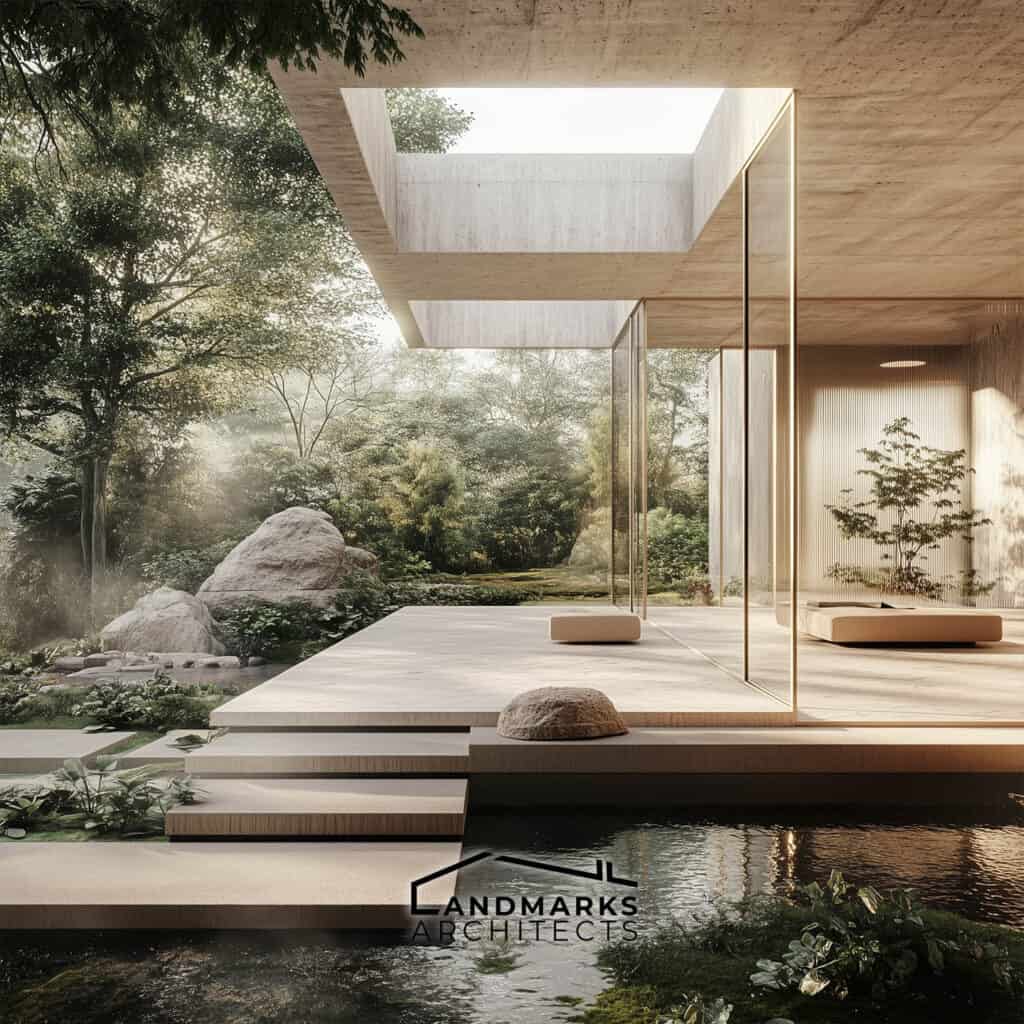
- Key Points:
- Focus on natural light and the use of natural materials.
- Design that harmonizes with the natural environment.
- Modern buildings that blur the boundaries between indoors and outdoors.
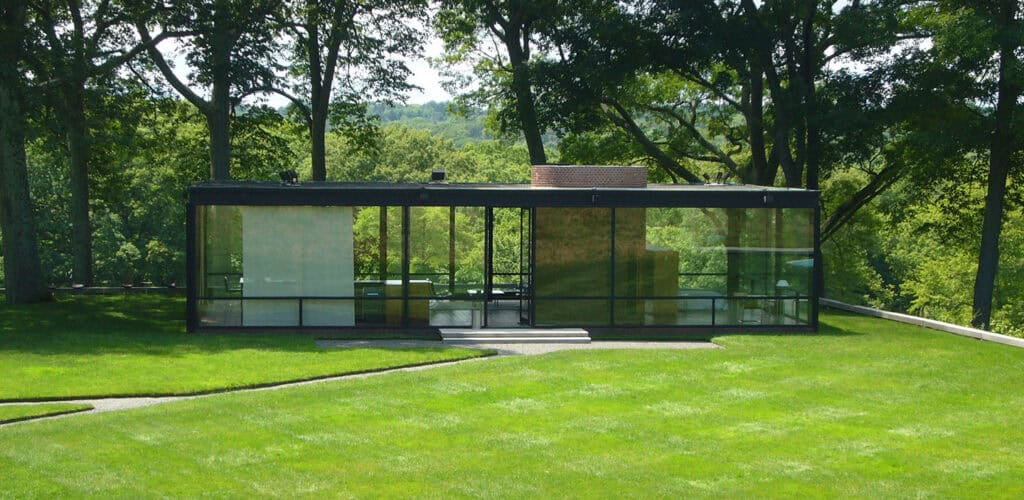
- Example: The Glass House by Philip Johnson is a minimalist home with walls made entirely of glass. It seamlessly blends the interior with the surrounding nature. The design emphasizes openness and transparency.
7. Large, Unadorned Windows
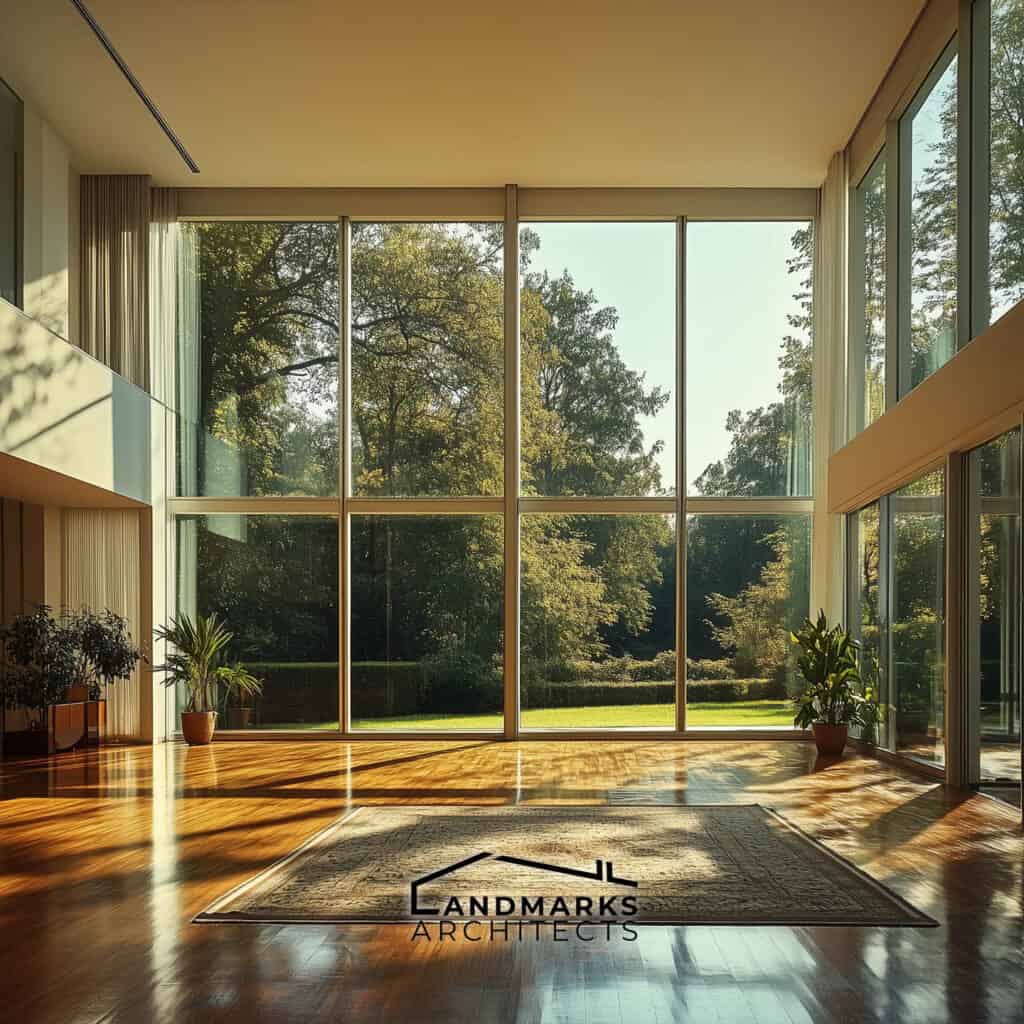
- Key Points:
- Large windows are used to allow natural light and create openness.
- Minimal ornamentation around windows to maintain simplicity.
- Glass walls are often used to enhance transparency and connection with the outdoors.
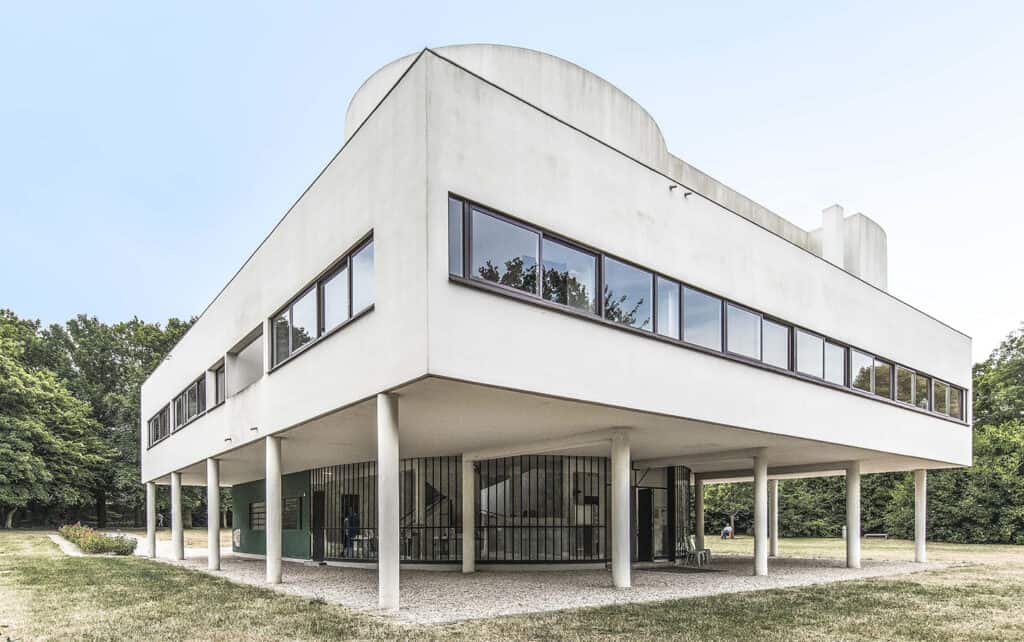
- Example: Le Corbusier’s Villa Savoye is a great example of the International Style. It features large, simple windows. The design focuses on natural light and openness, with very few decorations.
See Also Modern Organic Architecture
8. Rejection of Ornamentation
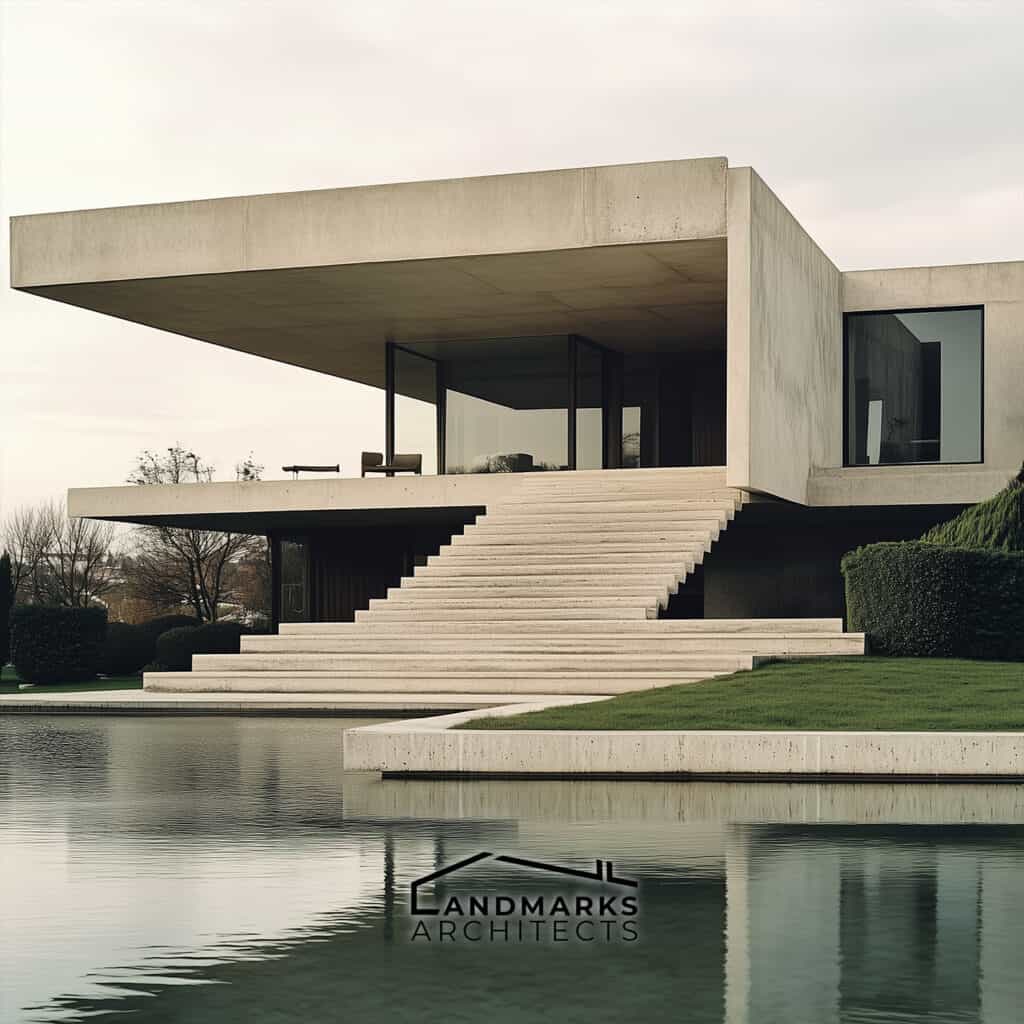
- Key Points:
- Modernist architecture often rejects decorative elements in favor of minimalism.
- Focus on clean lines and structural form over embellishment.
- The movement away from traditional and classical architectural styles.
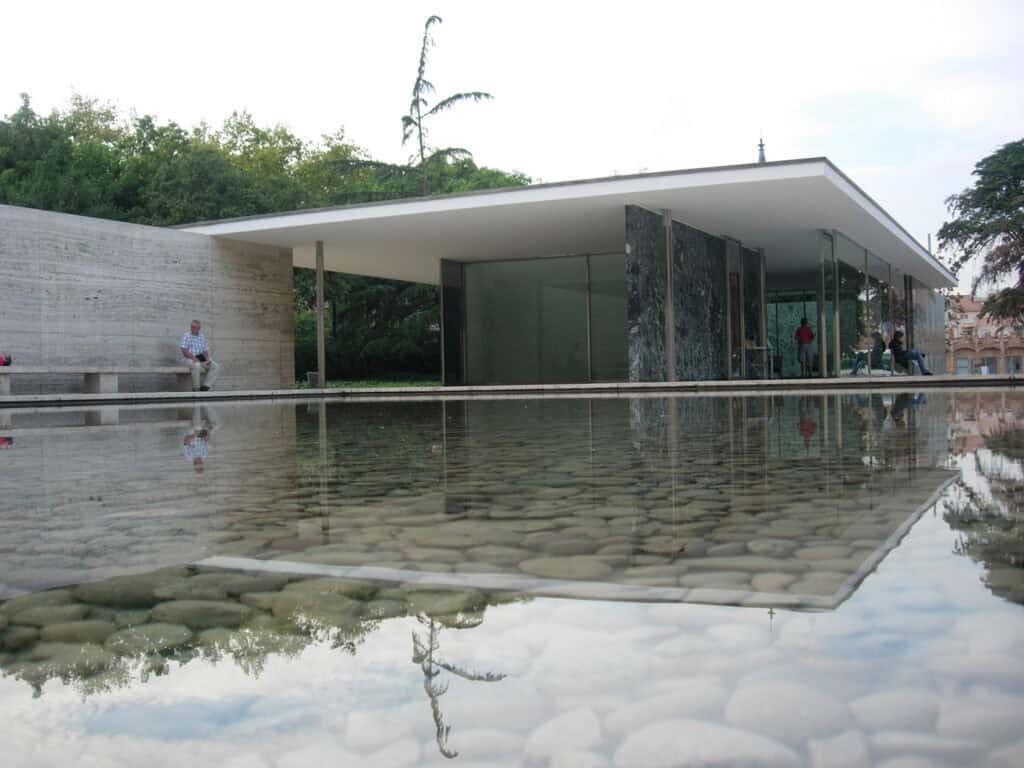
- Example: Ludwig Mies van der Rohe’s Barcelona Pavilion is a well-known example of modernist architecture. It avoids decorations and features clean lines, open spaces, and a simple design. This reflects the modern movement’s focus on simplicity and usefulness.
9. Innovation in Structural Engineering
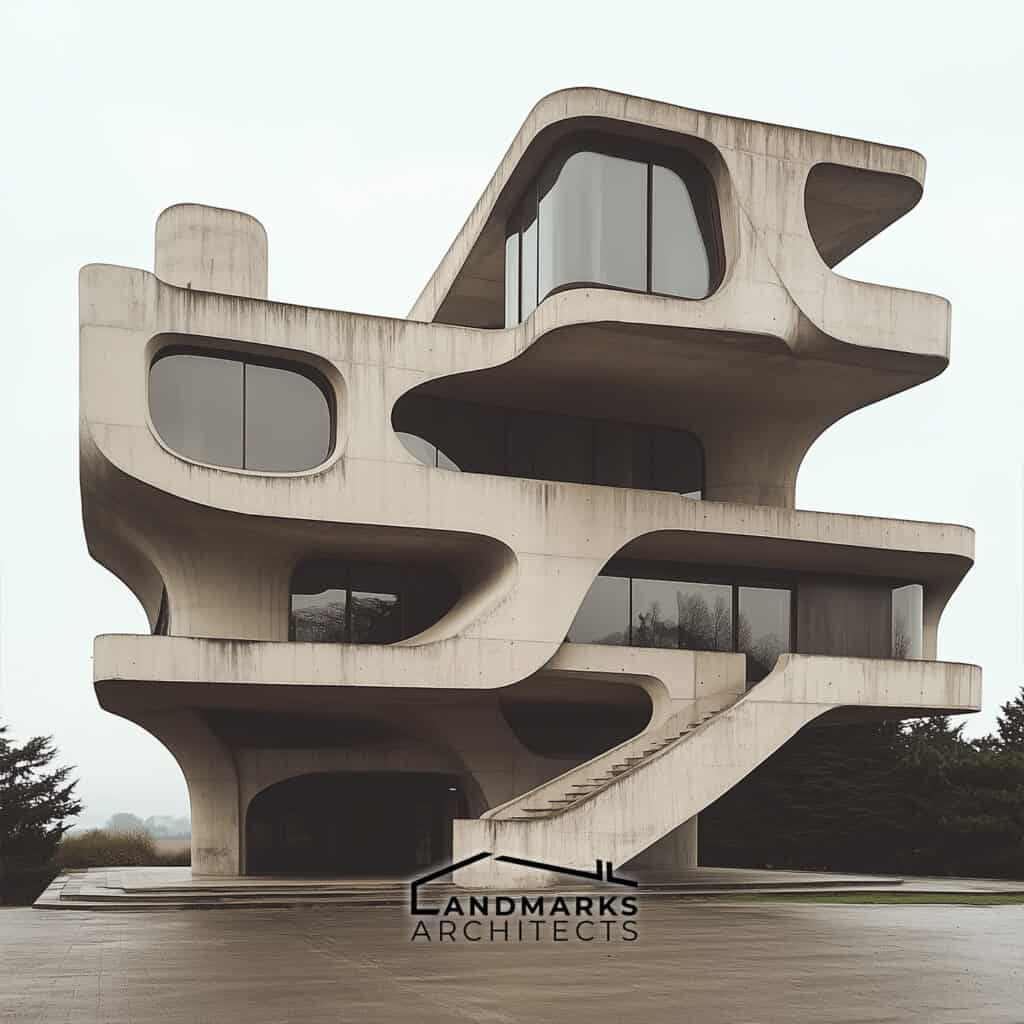
- Key Points:
- Modernist architects embraced structural innovation to create bold new forms.
- Use of reinforced concrete and steel frames to achieve unprecedented designs.
- Modern buildings often feature asymmetrical compositions and unusual shapes.
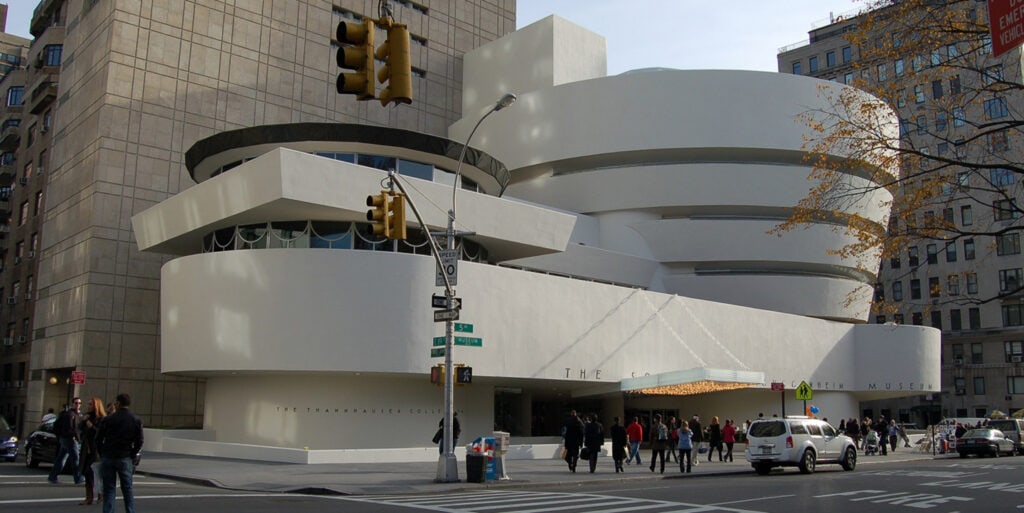
- Example: The Guggenheim Museum in New York, designed by Frank Lloyd Wright, is a great example of innovative architectural ideas. Its spiral shape and overhanging floors were made possible by advanced engineering, making it a standout in modern architecture.
10. Focus on Simplicity and Clarity
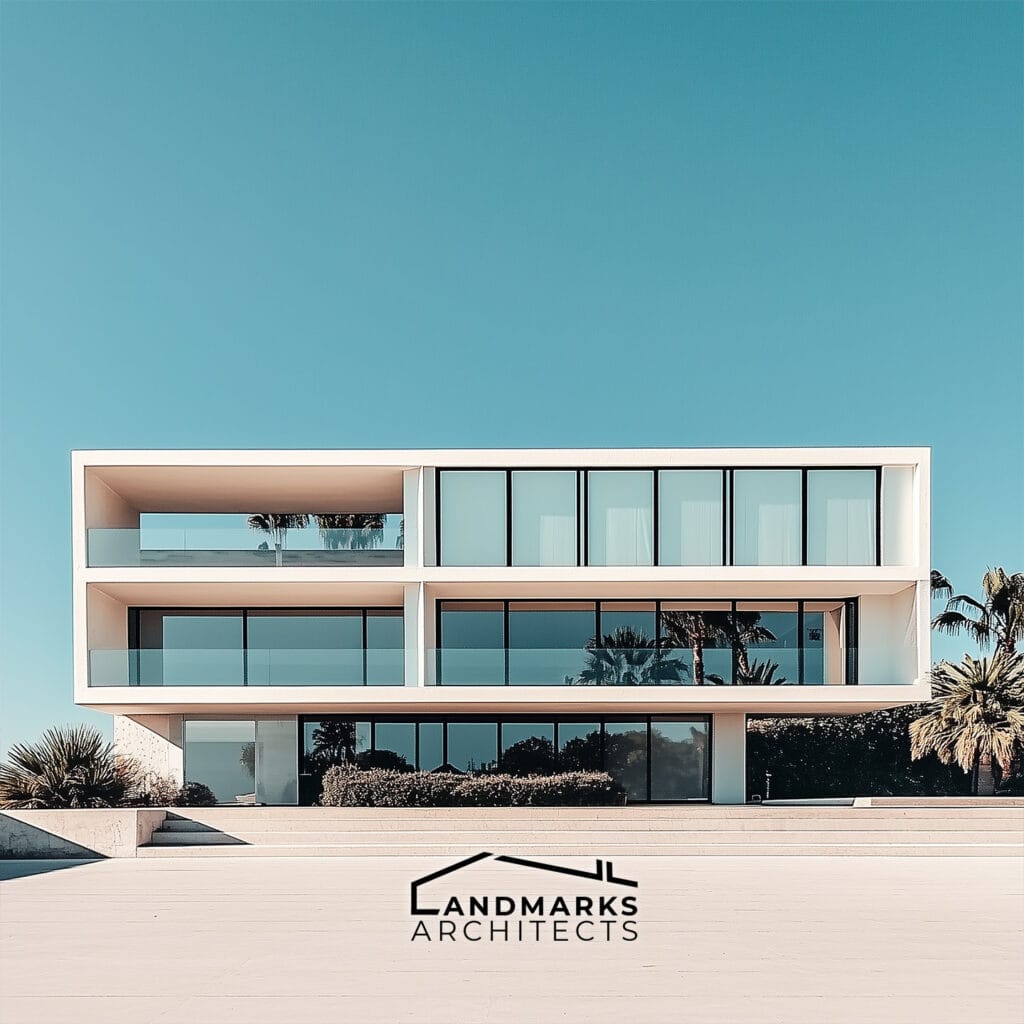
- Key Points:
- Emphasis on straightforward, uncluttered design.
- Minimalist design principles are central to modernist architecture.
- Modernist buildings often feature clean lines and a focus on functionality.
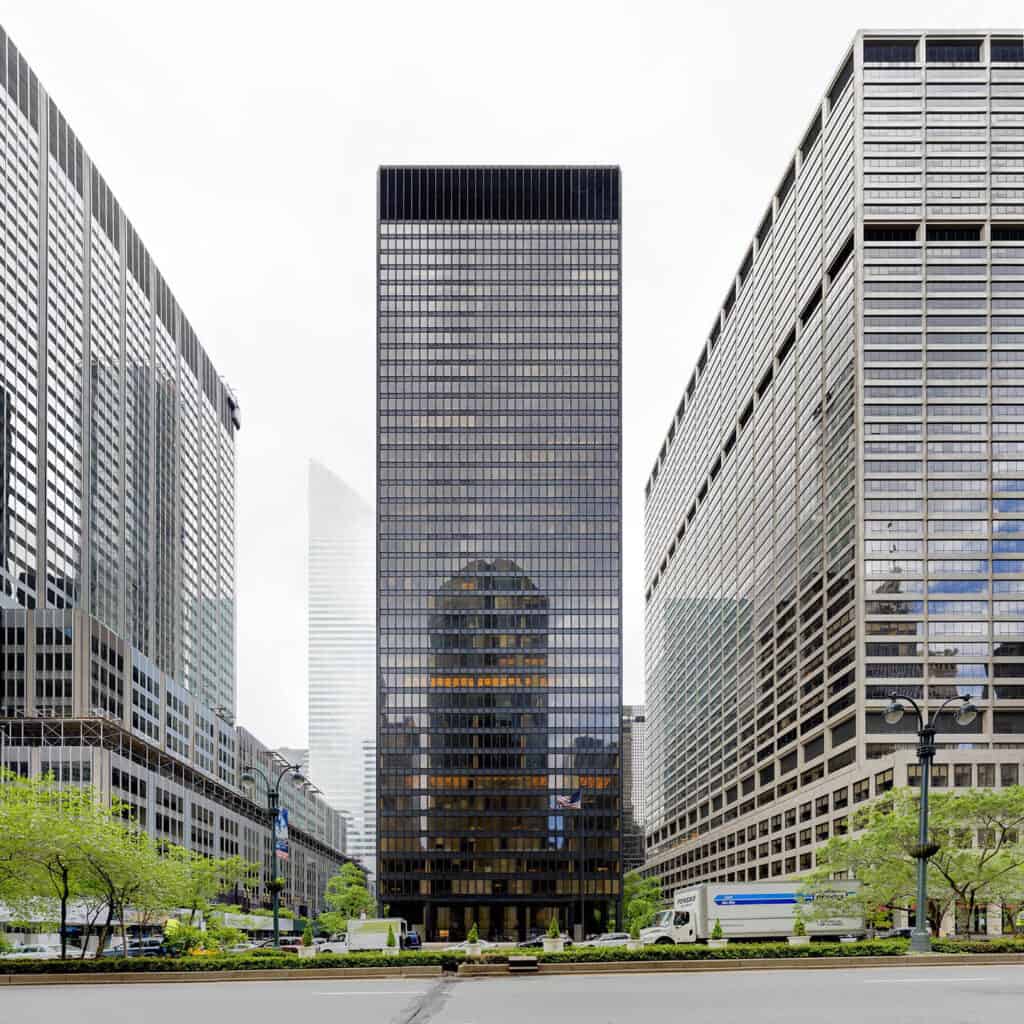
- Example: The Seagram Building in New York, designed by Ludwig Mies van der Rohe and Philip Johnson, is a clear example of simplicity. Its smooth glass exterior, clean lines, and minimalist design show how modern architecture focuses on straightforward and functional design. This building represents one of the key architectural building types in modernist architecture.
See Also Modern Baroque Architecture
What is modernist style in architecture? A Recap
Modernist architecture is defined by its commitment to functionality and simplicity, characterized by clean lines, minimalist aesthetics, and innovative use of industrial materials.
Its key features—such as open floor plans, large unadorned windows, and geometric forms—create spaces that are both practical and visually striking. This style embraces new engineering techniques to achieve bold, uncluttered designs that harmonize with nature and reject unnecessary ornamentation.
Through examples like the Seagram Building and the Guggenheim Museum, modernist architecture continues to influence and inspire with its elegant, straightforward approach.



